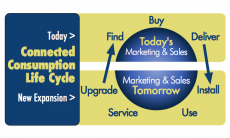Data is any company’s greatest asset. Professionals in all departments, from R&D and production to sales and marketing, rely on information to make decisions that sustain and grow business. But with the 21st century’s focus on big data, the importance of the tiny facts that lead up to the big revelations seems to have been forgotten. Indeed, rarely do we think about micro data, preferring the dazzle of a vast forest over the beauty of its individual trees. But the truth is this: big data’s broad generalizations and correlations can’t exist without the fine details that micro data offers.
The Difference Between Big Data and Micro Data
Big data is characterized by its volume, velocity and variety, meaning it’s a lot of information that has been collected in many ways and in many forms. It’s a big picture view that quickly ties together the loose ends of multiple different data sets.
Micro data is the opposite. Micro data consists of data points that reflect individual characteristics. It is collected by interacting with members of a target audience and noting their specific preferences. Whereas big data represents facts and figures about populations, micro data represents facts and figures about individuals.
How Do Businesses Collect Different Types of Data?
In the world of data-driven business solutions, there is no “one size fits all.” Big data can’t solve every problem, nor can micro data. To get the most effective results, companies must utilize both macro and micro data sets, comparing and contrasting the individual insights gleaned as part of micro data collection in order to build a broader understanding of behavior. Marketers, in particular, need to see the trees in order to fully appreciate the forest around them.
There are several ways to collect data. Questionnaires and interviews, such as online and paper surveys or in-person and telephone interviewing, are vital to gathering detailed person-specific information. These types of research techniques help researchers understand why a consumer acts in a certain way – why he or she buys (or doesn’t buy) a certain product. Other, less-intrusive measures (like looking at census information and trade organization membership lists) can also highlight specific details for a targeted group of individuals.
Other measures, however, focus on gathering information that can more easily lead to mass generalizations. To do this, companies step back and consider a broader cache of information: transactional data from store/online purchases and rewards programs; social media monitoring; analysis of physical or online store traffic; and others. These methods help shed light on the ways consumers are acting upon their beliefs as a larger whole.
So, What’s the Takeaway?
Businesses, especially the marketers promoting them, must carefully consider a wide range of data in order to fully inform the overall customer experience and maintain profitability and growth. Big data can only inform decisions if companies have a viable hypothesis, a good question that they can use their big data to answer. But micro data will always be needed to highlight the question(s) needing to be asked.







